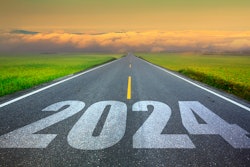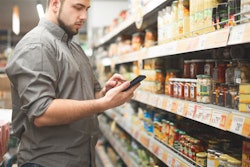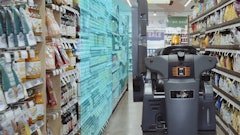
The influx in cargo theft, cybersecurity concerns and ever-changing industry regulations continue to threaten the safety and security of tomorrow’s supply chains.
But, when it comes to the State of the Supply Chain, the implementation of technology mixed with the ability to be flexible, nimble and versatile will enable the logistics world to pivot accordingly.
Marina Mayer, editor-in-chief of Food Logistics and Supply & Demand Chain Executive, talks exclusively with Chris Pickett, COO, Flock Freight, about how in-transit visibility, supply chain velocity, faster product lifecycles and SKU proliferation will continue to drive growth in the cold food chain come the New Year.
CLICK HERE to read the article in full.
Food Logistics: From your perspective, what are considered the Top 5 trends to watch in 2024? And why?
Chris Pickett:
Sustainability. Companies are just 1-2 years away from needing to report their carbon emissions. We’ll see hiring movement on in-house and outside sustainability experts and longer supplier questionnaires. The expectation is going to be that supply chain partners can report on exactly how, where, and when freight moves for their customers so that reporting requirements can be met.
In-transit visibility. As supporting IoT technologies like sensors (RFID, GPS, eSIMs, etc.), cloud data storage, and AI/ML prediction models mature, the ability to track shipments in transit in real-time and infer the likelihood future events is finally becoming within reach. We believe that not only can we dramatically improve the overall reliability of the food and beverage supply chain but better visibility tech can also be leveraged to better utilize the transportation capacity in a marketplace that remains as fragmented as it’s always been.
Product traceability (for provenance and safety, fraud mitigation). Damage and loss cost the average food and beverage shipper more than $6 million annually in 2022.
Supply chain velocity. As more and more product is inventoried closer to the point of ultimate consumption, fulfillment networks likely become more broadly distributed and increasingly decentralized. The winners in the marketplace will be those that learn to better anticipate demand patterns and are able to position to satisfy that demand faster than their competitors.
SKU proliferation and faster product lifecycle drive increasing demand for smaller, more frequent replenishment orders (pallets not FTLs). As the digital transformation of retail continues with eCommerce now accounting for +15% of the total albeit at a growth rate that has regressed back to pre-COVID trendlines, consumer tastes are evolving faster than ever before. So, building supply chain agility and nimbleness will be key. Those that can adapt to shifting consumption patterns the quickest will outpace those that can’t. So again, this one is all about velocity.
Food Logistics: Describe some of the challenges impacting many of today’s supply chains.
Pickett: Fragmentation and the lack of end-to-end visibility are keeping supply chains mired in inefficiencies that cannot keep pace with the increase in demand volatility.
Demand volatility—for example, e-commerce vs. retail, services vs. goods—makes planning and forecasting increasingly difficult.
The lack of integration standards makes digital connectivity difficult.
We need an injection of more talent in order to meet the demands that come with the changes we’re seeing across the industry. Companies are going to feel pressure for more data collection and the ability to analyze, report, and act on that data. This is going to take time and talent that many companies aren’t budgeting for yet.
Food Logistics: Describe the State of Transportation, and how factors such as union strikes, driver shortage, etc. will affect the State of Transportation in 2024.
Pickett: The industry is not likely to get any less volatile in 2024, and it will be in a much less forgiving market.
As supply recalibrates to exiting demand levels, we will likely enter the next US TL market cycle next year and double-digit year-over-year increases in spot rates, with contract rates lagging but trending higher as well.
Food Logistics: Describe the State of E-Commerce, and how the B2B and B2C channels in cold chain have thrived/declined since the onset of COVID.
Pickett: E-commerce now accounts for +15% of retail sales and growing and is back on its pre-COVID trend line.
Food Logistics: Describe the State of Sustainability, and what’s in store for supply chains come 2024 with certain ESG regulations coming down the pipeline.
Pickett: Emissions disclosures are voluntary in the U.S., but that’s all about to change. It’s table stakes to have some sort of sustainability program, but the components and maturity of a program can vary widely across businesses. Scope 3 disclosure is in its infancy and there’s lots of uncertainty in the accuracy of reporting methods and the feasibility of tracking the necessary data points. SB253, a newly passed law that requires companies who earn at least $1B in annual revenue and do any business in CA will need to disclose Scopes 1, 2, and 3 emissions on a government-sponsored online platform. This reporting is phased in starting in 2026, and penalties for not meeting reporting criteria include fines up to $500,000 per year. Reporting is going to shift from voluntary to mandatory with the passing of SB253 and an anticipated SEC law.
Supply chain sustainability isn’t just about reducing tailpipe emissions – it’s also about the products being transported. The U.S. wastes 119 billion pounds of food each year. This is an obvious environmental and human issue, but it’s also a business problem. That wasted food equates to $408 billion thrown in the landfill because of surpluses in grocery stores, low crop prices, issues during transportation, and a whole variety of events in foods’ lifecycle. In a study we released this year, we found that the average shipper had 2,436,137 pounds of product go to waste from damage and lost shipments in 2022. That’s the equivalent of 1 truckload a week per shipper. Effective in 2022, SB1383 requires reducing statewide disposal of organic waste 50% by 2020 and 75% by 2025 in California. It also required grocery stores, food wholesalers, hotels and restaurants to recover at least 20% of disposed edible food for human consumption by 2025. It’s time for supply chain partners to think ahead and contribute to reducing food disposal to help their customers cut costs and comply with emerging state and federal regulations.
Food Logistics: What are some things not addressed above that may be pertinent to our readers?
Pickett: Across the United States, people have access to more goods than ever before. But the way most of those goods reach them—freight shipping—has remained largely unchanged for over 100 years. Businesses shipping less than a full truckload have two options. They can use hub and spoke freight networks, accepting delays and breakage costs. Or they can pay extra for an entire truck that ships directly, meaning they’re paying to ship air.
Most choose the second, leaving nearly half the trucks on the road hauling half-empty. It’s a market failure that’s terrible for businesses and the planet. Shippers don’t know any other option.
We need to modernize the transportation and logistics system in order to help shippers access more control and more savings, help carriers enjoy more choice and more profits, and build a sustainable future.
Flock Freight’s proprietary matching technology solves this problem through shared truckload, which offers the efficiency of full truckloads for partial shipments.
CLICK HERE to read the article in full.




















